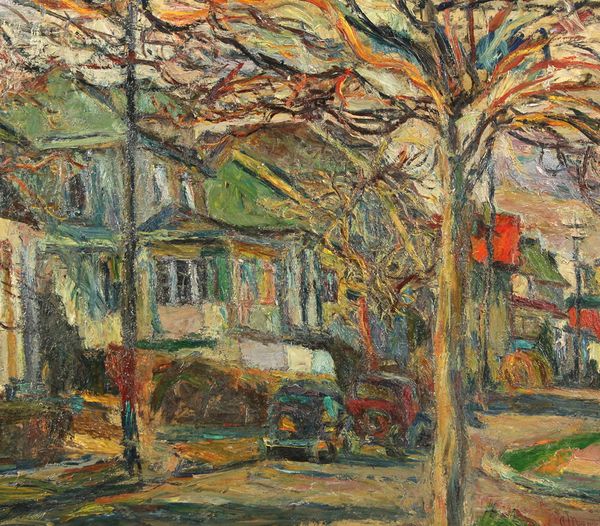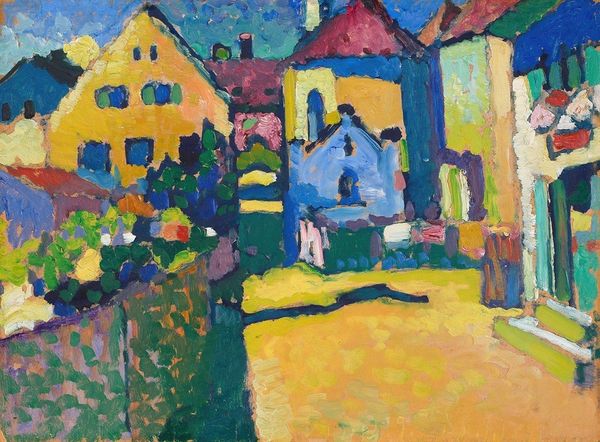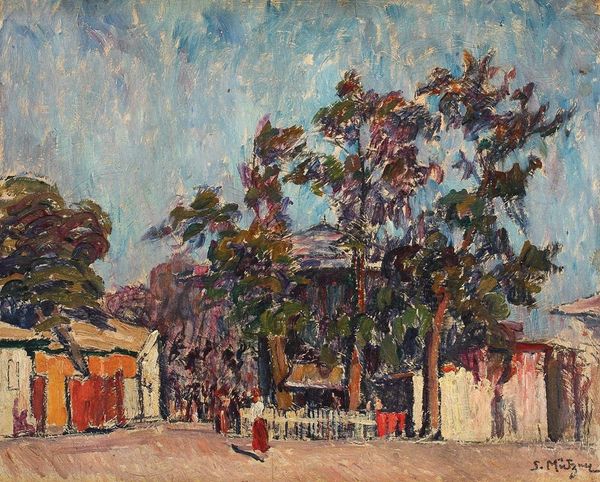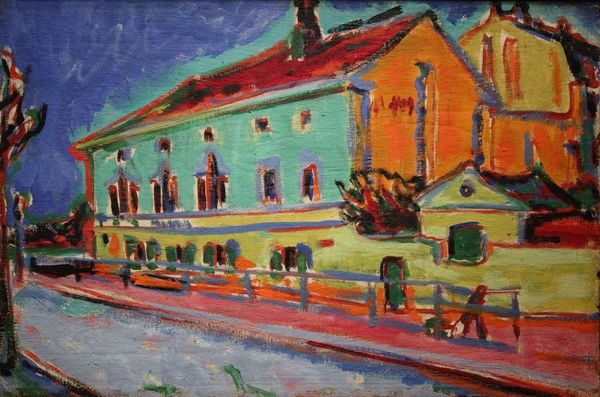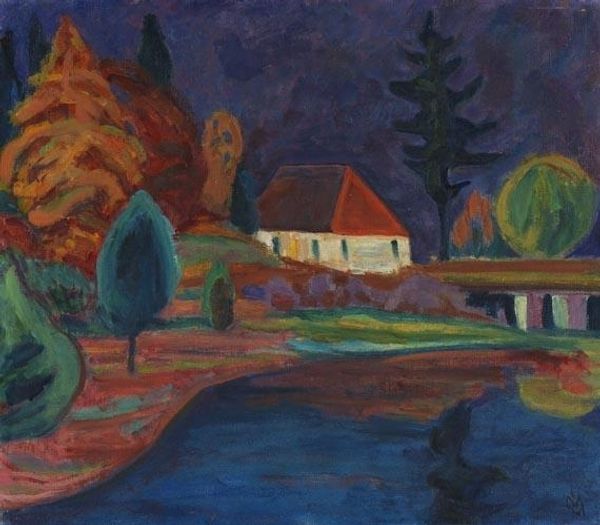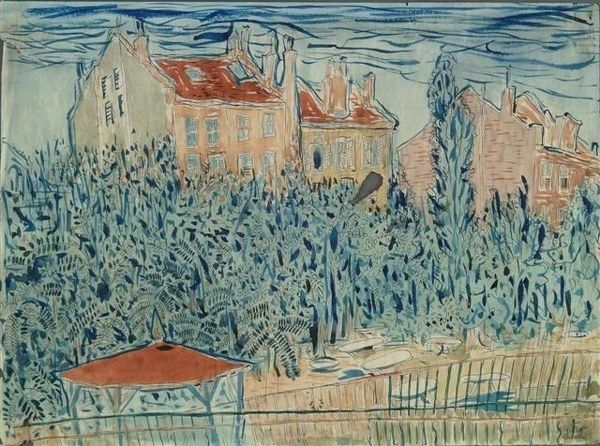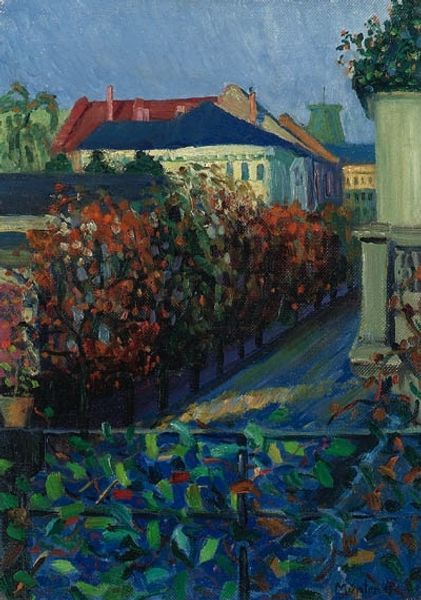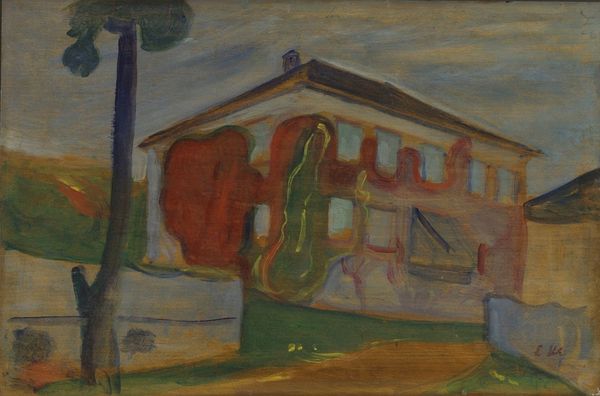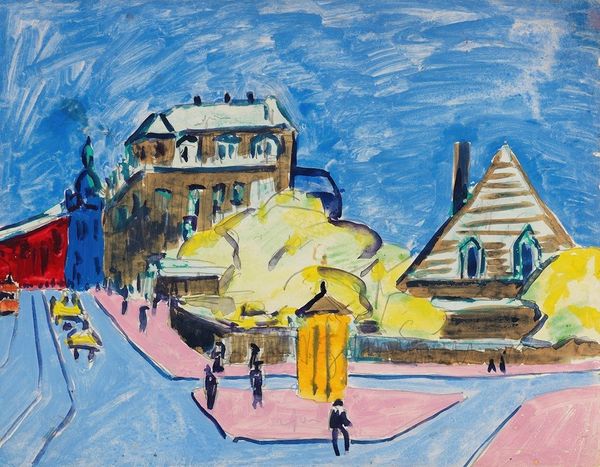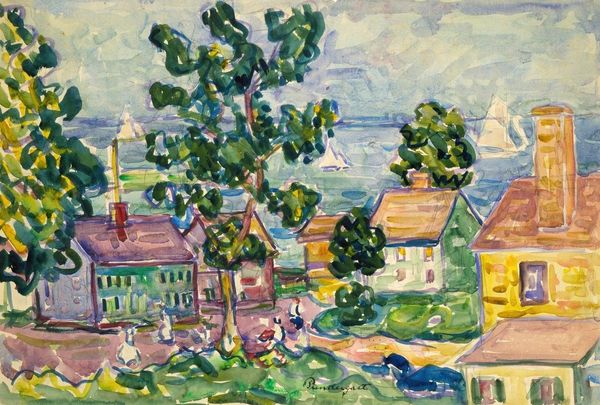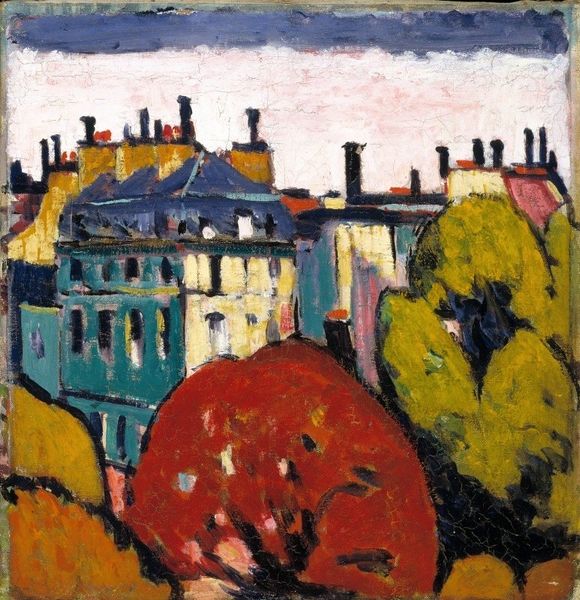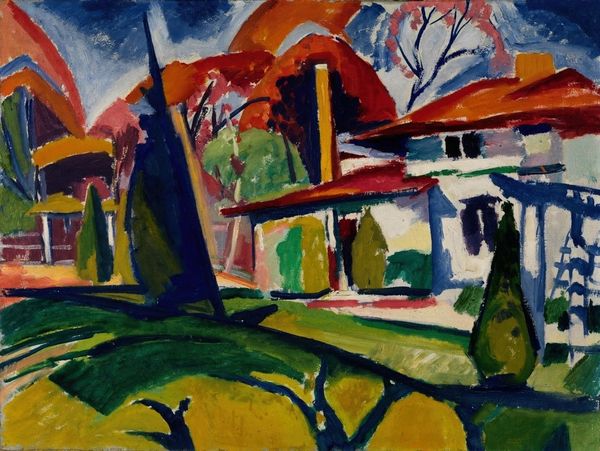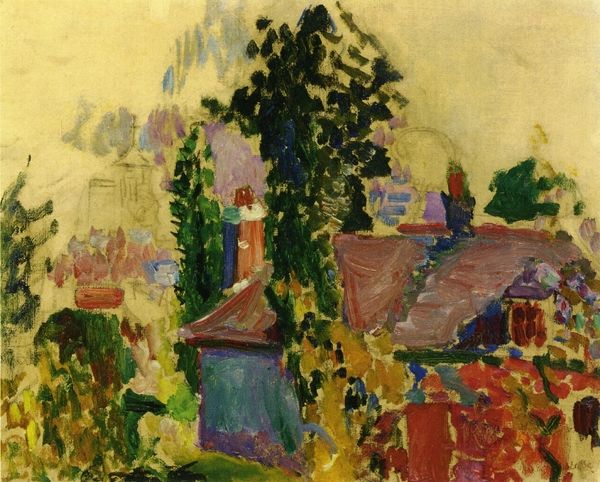
oil-paint
#
oil-paint
#
landscape
#
german-expressionism
#
impressionist landscape
#
handmade artwork painting
#
oil painting
#
expressionism
#
cityscape
#
building
Dimensions: 64.5 x 91 cm
Copyright: Public domain
Curator: This artwork is titled "Villa in Dresden," painted in 1910 by Ernst Ludwig Kirchner. What are your initial thoughts? Editor: The color palette strikes me immediately. The jarring juxtaposition of the ochre wall against the teal street—it's intentionally dissonant. The building itself, rendered in pale green with a blue roof, seems almost dreamlike. Curator: It's important to consider this was painted during a period of intense social and political change. Kirchner, a key figure in German Expressionism, used color and form to express feelings of alienation and anxiety that resonated with many at the time. Do you see those sentiments reflected in this landscape? Editor: I do, but it’s more nuanced. The building, while slightly skewed, has a sense of permanence. Kirchner is playing with perspective, sure, but the overall structure holds together visually. Curator: Precisely. That visual stability can be interpreted as commentary on bourgeois life. While Expressionism often challenged societal norms, Kirchner also benefited from that structure, grappling with his own complicated relationship with the establishment. The almost frenzied application of the oil paint mimics, in its rough application, the mental disquiet during an era of technological acceleration and intense urbanization. Editor: And that impasto, thick in some areas and thin in others, emphasizes the physicality of the paint itself. It isn’t trying to perfectly replicate reality; it is foregrounding its status as an object. Look at the way the pinkish red of the tree merges in certain spots with the strokes suggesting the teal of the background—there's an interesting interplay happening. Curator: The use of cityscapes allows Kirchner to both explore personal anxieties and comment on wider urban development and its effect on society. This "Villa," like many of his urban paintings, exists as a site of these cultural conflicts. The seemingly mundane is transformed into a landscape charged with emotion and socio-political critique. Editor: Yes. And to look at it purely in formal terms, that flattening of space—the way the wall, road and buildings stack on top of each other is visually interesting and also serves that underlying expressive mode that we attribute to this painting. Curator: Seeing the villa situated like this prompts questions about who inhabited such spaces, how these environments were changing, and what those changes meant for society's power structures and collective psychological landscape. Editor: It becomes more than just a view. It becomes an interpretation filtered through emotion and formal invention.
Comments
No comments
Be the first to comment and join the conversation on the ultimate creative platform.
